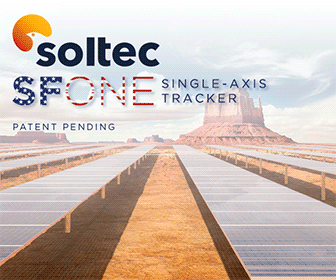Study Says Renewables to Hit 16% by 2018; not 2040 as EIA Projects
In a new 32-page study recently released, the SUN DAY Campaign challenges assertions by the U.S. Energy Information Administration (EIA) that renewable energy sources will provide only 16% of the nation's net electrical generation by the year 2040. Using EIA's own previously published data, the analysis shows that it's more likely the 16% level could be reached within five years.
In its "early release overview" of the "Annual Energy Outlook 2014" (published December 16, 2013 with the final release of the full AEO2014 now slated for April 30, 2014), the EIA's Reference Case foresaw renewable energy sources (i.e., solar, wind, biomass, geothermal, hydropower) accounting for just 16% of the nation's net electrical generation by 2040.
However, EIA's own published data for the 11-year period January 1st, 2003 through December 31st, 2013 reveal that the percentage of the nation's net electrical generation represented by renewable energy has expanded from less than 9% in 2004 to nearly 13% in 2013 - i.e., within a decade. Given the relatively consistent growth trends of the past decade or longer for most renewable energy sources and their rapidly declining costs, it seems improbable that it will require another 27 years to grow from 13% to 16%. Thus, EIA's forecast is not just unduly conservative; almost certainly, it is simply wrong.
In fact, if the trends reflected in EIA data from the past decade continue, renewable energy sources could increase to as much as 13.5% of net U.S. electrical generation in 2014, to 14.4% in 2015, to 15.3% in 2016, and reach or exceed 16.0% no later than 2018 -- i.e., within five years and not the 27 years forecast by EIA. At worst, they would reach 16% by 2020.
"In as much as policy makers in both the public and private sectors - as well as the media and others - rely heavily upon EIA data when making legislative, regulatory, investment, and other decisions, underestimation can have multiple adverse impacts on the renewable energy industry and, more broadly, on the nation's environmental and energy future," noted Ken Bossong, Executive Director of the SUN DAY Campaign. "Consequently, EIA is doing a serious disservice to the public by publishing analyses that are inherently inconsistent with its own historical data and near-term projections."
The full 32-page report (attached) includes the assumptions and projections made, on a technology-by-technology basis, using EIA data. In addition, following the projections provided for each technology is a listing of recent studies and news reports that offer alternative or complementary scenarios - many of which are more aggressive than those provided by the SUN DAY Campaign. These additional studies suggest that even SUN DAY's analysis may prove to be unduly conservative.
The full study can be found online at: http://www.nirs.org/alternatives/sundayforecast414.pdf
The SUN DAY Campaign is a non-profit research and educational organization founded in 1992 to promote sustainable energy technologies as cost-effective alternatives to nuclear power and fossil fuels.










.jpg?r=7600)
.jpg?r=3564)
.gif?r=7806)